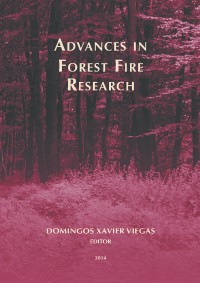Please use this identifier to cite or link to this item:
https://hdl.handle.net/10316.2/34202| Title: | Utilizing random forests imputation of forest plot data for landscape-level wildfire analyses | Authors: | Riley, Karin L. Grenfell, Isaac C. Finney, Mark A. Crookston, Nicholas L. |
Keywords: | imputation;forest plot data;Landfire;random forests | Issue Date: | 2014 | Publisher: | Imprensa da Universidade de Coimbra | Journal: | http://hdl.handle.net/10316.2/34013 | Abstract: | Maps of the number, size, and species of trees in forests across the United States are desirable for a number of applications. For landscape-level fire and forest simulations that use the Forest Vegetation Simulator (FVS), a spatial tree-level dataset, or “tree list”, is a necessity. FVS is widely used at the stand level for simulating fire effects on tree mortality, carbon, and biomass, but uses at the landscape level are limited by lack of availability of forest inventory data for large contiguous areas. Detailed mapping of trees across large areas is not feasible with current technologies, but statistical methods for matching forest plot data with biophysical characteristics of the landscape offer a practical means to populate landscapes with a limited set of forest plot inventory data. We used a modified random forests approach, with Landfire vegetation and biophysical predictors at 30m grid resolution. In essence, the random forests method creates a “forest” of decision trees in order to choose the forest plot with the best statistical match for each grid cell in the landscape. Landfire data was used in this project because is publicly available, offers seamless coverage of variables needed for fire models, and is consistent with other datasets, including burn probabilities and flame length probabilities generated for the continental US by Fire Program Analysis (FPA). We used the imputed forest plot data to generate a map of forest cover and height as well as existing vegetation group for a study area in eastern Oregon, and examined correlations with Landfire data. The results showed good correspondence between the two data sets (84-97% within-class agreement, depending on the variable). In future research, the new imputed grid of inventory data will be used for landscape simulation studies to determine risk to terrestrial carbon resources from wildfire as well as to investigate the effect of fuel treatments on burn probability and fire sizes. | URI: | https://hdl.handle.net/10316.2/34202 | ISBN: | 978-989-26-0884-6 (PDF) | DOI: | 10.14195/978-989-26-0884-6_67 | Rights: | open access |
| Appears in Collections: | Advances in forest fire research |
Files in This Item:
| File | Description | Size | Format | |
|---|---|---|---|---|
| 978-989-26-0884-6_67.pdf | 1.81 MB | Adobe PDF |  |
Items in DSpace are protected by copyright, with all rights reserved, unless otherwise indicated.
